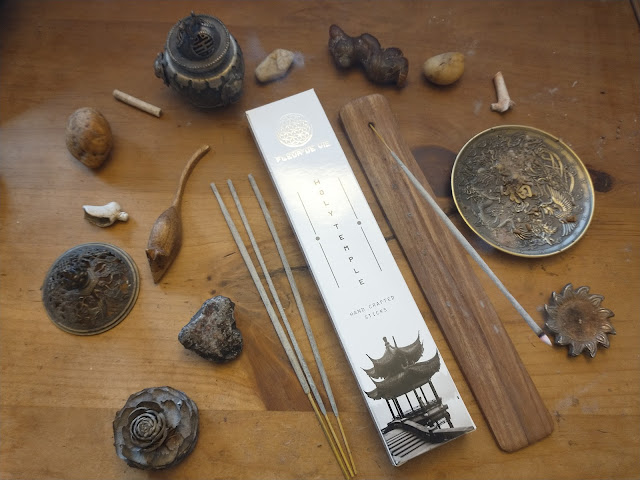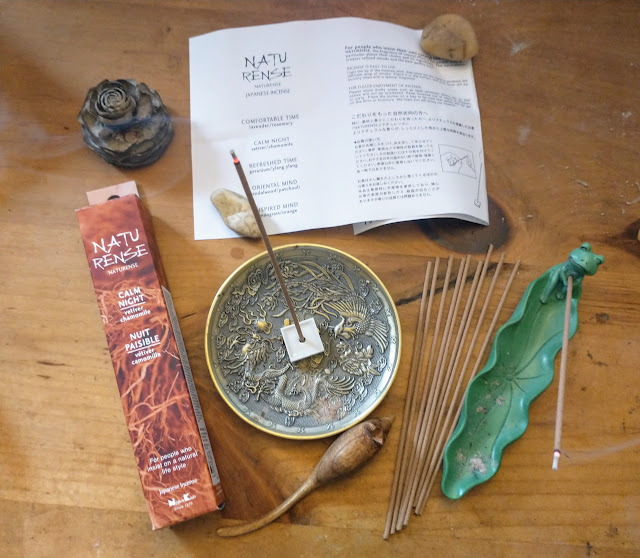Fumino is the brand name of a British importer and online trader, Inbound To Anglia, who source the incense from India. While not certain, there are indications that the incense may be made by Vivasvan International of Bangalore, who trade as Garden Fresh. Though the company was founded too recently to be "third generation" as claimed in one of Fumino's blurbs.
The scent on the cone is gently perfumed - spice (nutmeg, cinnamon), citric (orange), licorice, wood, floral. It's professional, well balanced, and pleasant. Some of those scents are in YSL's Black Opium. Each person will recognise and pull out other scents from this incense, and I suspect they will likely also be found in YSL's Black Opium.
It's a moderately smoky cone with a reasonably assertive presence which I tend to favour. The scents on the burn kinda follow those on the cone, though there's more candy sweet tones, along with more wood and warmth. It's a decent, modern fragrance - quite enjoyable, without being exciting or interesting, or my sort of thing. I like modern scents in incense, though the main reason I burn incense is for the links to tradition, so modern scents are not holding my interest and touching my emotions now as much as they did when I first starting getting into incense just over ten years ago.
On the whole a decent, good quality, modern style incense, but one that doesn't quite grab me.











































